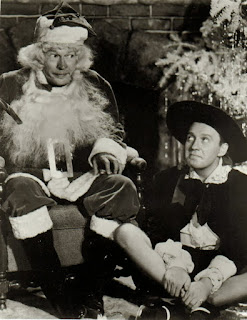Columbia’s mid-1930s Color Rhapsodies boast some good layouts and animation—even perspective animation—but they’re still second-rate imitations of Walt Disney’s Silly Symphonies.
An example is
In My Gondola, released on September 3, 1936, with story by Sid Marcus and animated by Art Davis (and others). Paul Etcheverry’s synopsis
1:
Scrappy, Margie and Yippy glide along the Venetian canals, and enjoy the romantic music of local troubadours. On flute and mandolin, Scrappy too, tries a little serenading, but is upstaged by the pranks of a violinist lobster. Yippy complicates matters by falling overboard and being chased by a swordfish at the bottom of the canal. After he returns, the threesome humourously eat huge amounts of spaghetti at a nearby restaurant, concluding a happy day. This light, uncharacteristically innocuous Scrappy entry presents smooth animation and attractive and overall visual styling.
Yippy brings to mind Pluto as he curiously deals with a smaller creature, then emulates Donald Duck by bouncing up and down with his arm straight out, closed-fisted, ready for a fight.
This all happens after the lobster gets in Scrappy’s pants. He plays a concertina, and then a violin, smashing around the little dog.






Yippy covers his eyes as the lobster is about to punch him with a right. No! He fakes and gets with a left.


After Margie bashes around Scrappy with a mandolin and flute, the lobster jumps overboard, with Yippy leaping in after him.
More reviews:
Plenty of imagination went into this Scrappy cartoon. The result is good entertainment with much spectacular excitement. Set on the Venetian canals the story has Scrappy boating with a girl. Scrappy’s dog gets involved with a musical lobster and while chasing him along the canal bottom annoys a swordfish. Here a cleverly drawn chase is worked in with the pup being rescued just as he is about to be run through. A comic, spaghetti eating sequence concludes. Production Code Seal No. 2,482. Running time, 8 mins. “G.” 2
A color cartoon featuring Scrappy, this is very good entertainment. Scrappy and his girl friend glide the Venetian waters in a gondola to the romantically tuneful “Neapolitan Nights.” Scrappy’s dog engages the undersea inhabitants in combat, particularly a swordfish. Then there is dancing at a casino with interludes of a spaghetti dinner. Running time, 8 minutes.3
Scrappy carried on until 1941. You needn’t hunt through your home trying to figure out where you put your copies of
Animania to read more. Go to Harry McCracken’s site
right here.
1 Animania, Issue No 20, Feb. 28, 1981, pg. 27.↩
2 Motion Picture Daily, Oct. 5, 1936, pg. 13↩
3 Motion Picture News, Oct. 17, 1936, pg. 51↩


















































